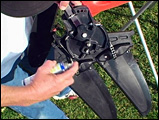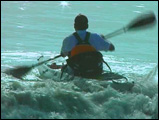Themes/
|
By Susan Kenney
February 2009
Additions - December 2009
Kayak  Vehicle of
Learning
Vehicle of
Learning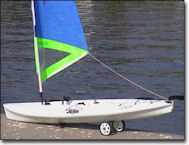
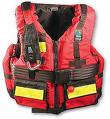 Personal Flotation Device
Personal Flotation Device  Leadership
Leadership
Leadership supports as
needed. Teachers/professors support a fledgling student/researcher. Leadership
training through modeling prepares one to become a support to others.
During my internship with Compuwrite
camp leadership was a key. From updating materials, to training
the teachers to use assistive technology software, to troubleshooting
when frustrations were mounting, to making decisions, the entire
experience was a very important catalyst for leadership growth.
Camera  Research
Research 
Research is a means for concept
integration/data collection as through learning/research. Visuals are key! EDRS 810 - Problems
and Methods in Education Research was the introduction to the mindset, process,
vocabulary, and power of research. EDRS 811-
Quantitative Methods in Education Research delved into quantitative research
based on scientific investigations and measurement. EDRS 812 - Qualitative Methods in Education
Research revealed the tremendous promise of qualitative research that is
conducted rigorously. EDUC 802 - Leadership Seminar, showed how leaders
use research to improve effectiveness and EDUC 805 - Doctoral Seminar in
Education, brought in a great variety of researchers to tell about their
journey that lead them to research and beyond.
In EDIT 747 - Technology and Teacher Education, EDSE 841, Intervention Research in Special Education- and in EDSE 842- Application of Research Methodology in Special Education
articles were studied to identify
key elements of research in order to be able to determine quality of research
presented. EDRS 823 Advanced Research Methods in Single Subject/Case Design was a concentration on the quality aspects of studies with fewer numbers of participants. During Compuwrite
camp although augmenting leadership skills was very important, while
helping teachers through difficult situations, ideas for research
were budding.
Kayak
tools  Learning environments-
Learning environments- 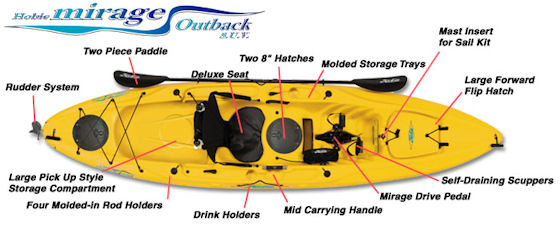
It is vital to consider the student and environment when designing and/or choosing features for used for instruction and demonstration of skills as well as when choosing features of AT. As the culmination of the AT Certificate program, EDSE 610- Designing Environments was the penultimate use of all skills learned in a program! Adapting the environment in consideration of the strengths and weaknesses of the people involved was the focal point. EDIT 705 - Instructional Design, identified the characteristics of the environment and best modes of learning, to design an instructional program. It introduced the need for and benefits of the iterative process also highlighted in EDIT 730 - Analysis and Design of Hypermedia/Multimedia Learning Environments, EDIT 752 - Design and Production of Multimedia/Hypermedia Learning Environments, and EDRS 812 - Qualitative Methods in Education Research. EDIT 747 - Technology and Teacher Education visited connections with teachers which is important when determining how to influence them to view AT as a viable tool for students with special needs. EDIT 742- Gaming and Robotics stressed the immense possibilities in educational environments and opportunities for learning. The Compuwrite camp gave experience in a different learning environment where assistive technology helped many students to create writing products and try out different technologies in safe surroundings.
Paddle,
Peddle, Sail, Trolley Wheels  Assistive Technology
Assistive Technology 

The paddle represents Instructional Technology
in General Education which is generally sufficient for kayakers or most
students/researchers. The alternative modes of propulsion for the kayak symbolize
Assistive Technology (AT). The different
approaches take advantage of strengths of the kayaker and energy in
environment. They are examples of multiple means of representation and multiple
means of expression. AT was introduced
in EDUC
600 - Workshop in Education. EDSE 610-
Designing Environments was the culmination of the AT Certificate program. Students used all skills developed to create
an environment designed specifically for a group of individuals with specific
needs. The needs of a great variety of
disabilities were covered throughout the different classes. For example, while in EDSE 669 - Position and
Handling, the needs of students with severe disabilities were investigated, in EDIT
730 - Analysis and Design of Hypermedia/Multimedia Learning Environments and EDIT
752 - Design and Production of Multimedia/Hypermedia Learning Environments
focused on students who were both gifted intellectually and had another exceptionality.
While in EDSE 649- Advanced Clinical Psycho-Educational Assessment in Special Education the focus was in assessment of a person with special needs and in problem solving to give the person maximum independence, both high tech and low tech assistive technology solutions were found.
Rudder  Previous Research
Previous Research
Directs the craft as teacher
models/previous AT research outlines the possibilities and needs. Current
Literature is the guiding force.
Storage Containers  Research & Portfolios
Research & Portfolios
Signify the collections of findings and of student/researcher organization of materials needed for learning/researching. EDIT 772- Portfolio provided skills to assemble a collection of products illuminating the learning through this PhD program.
Any of
the options or combination of options can help a kayaker get from one place to
another. Learning to identify and use
features and tools of AT that uniquely fit a situation and a student’s needs is
the epitome of Assistive Technology!


